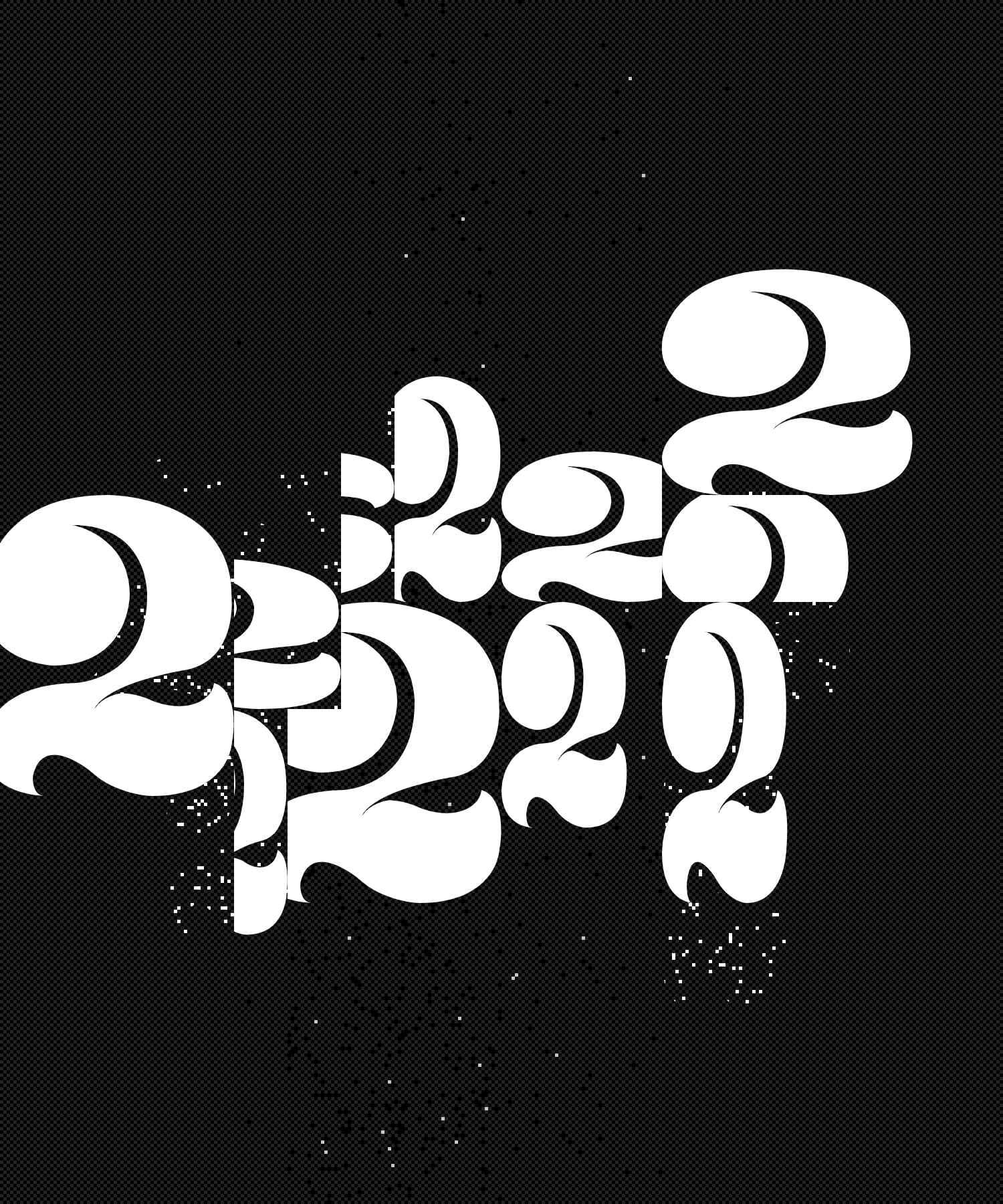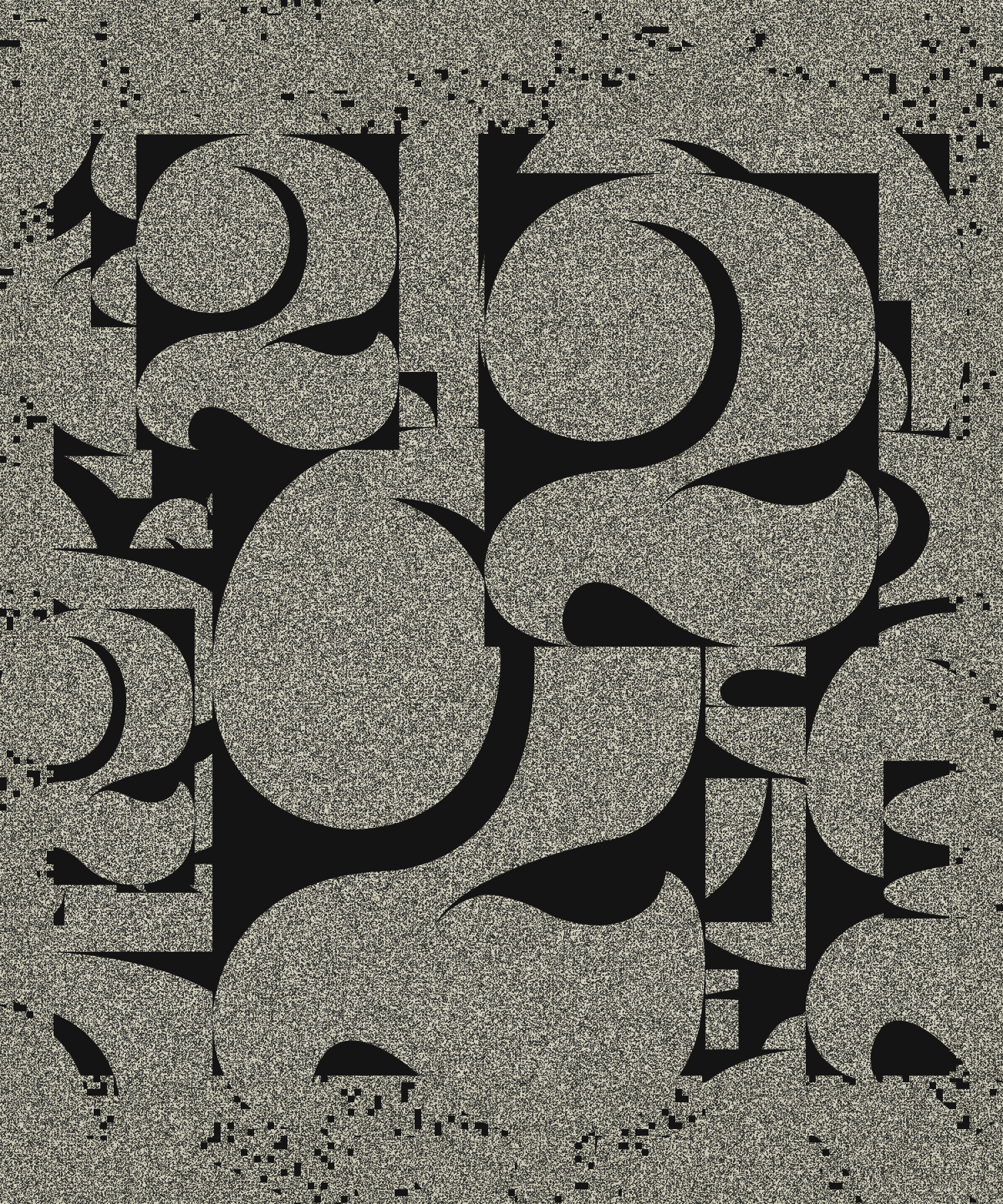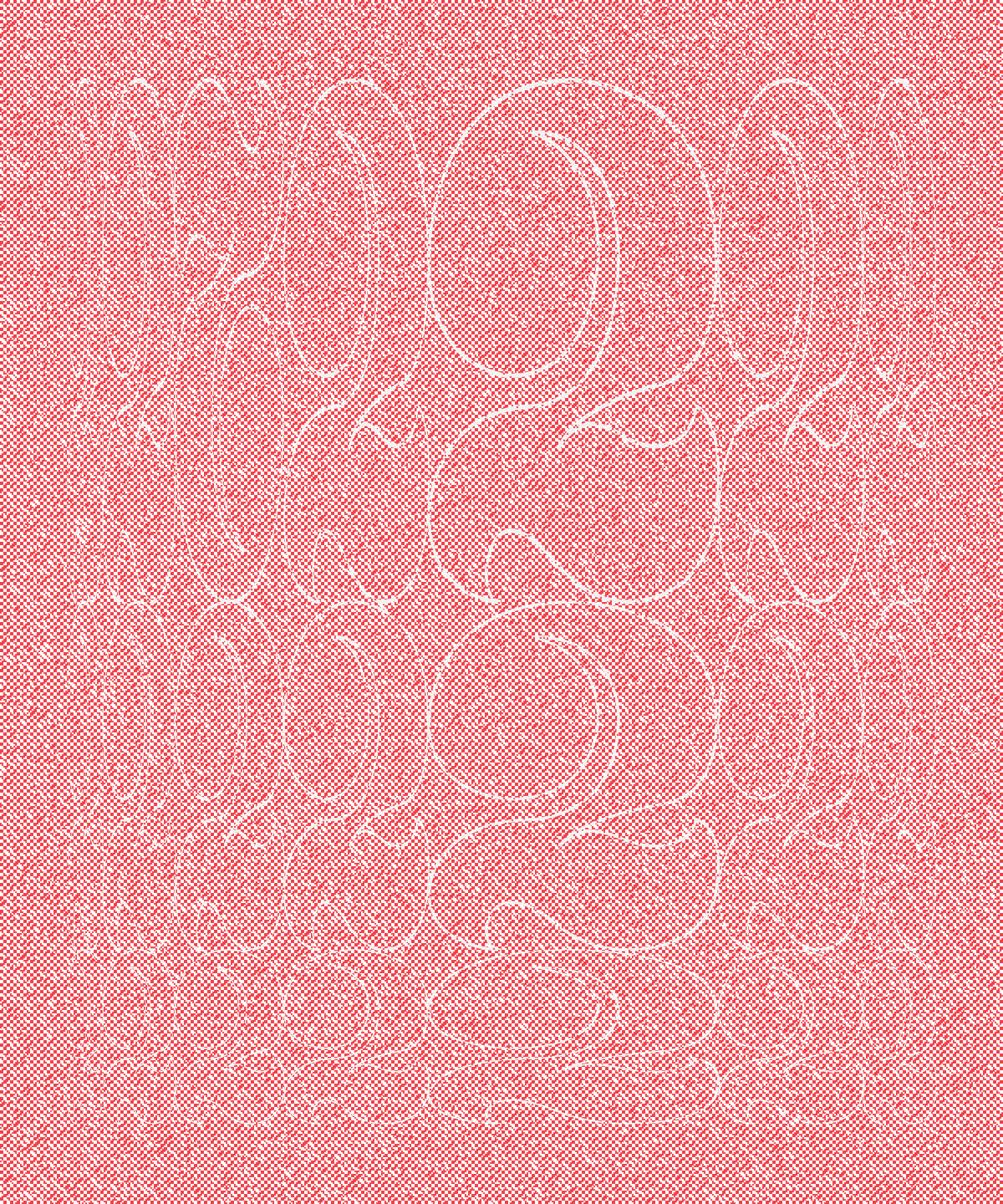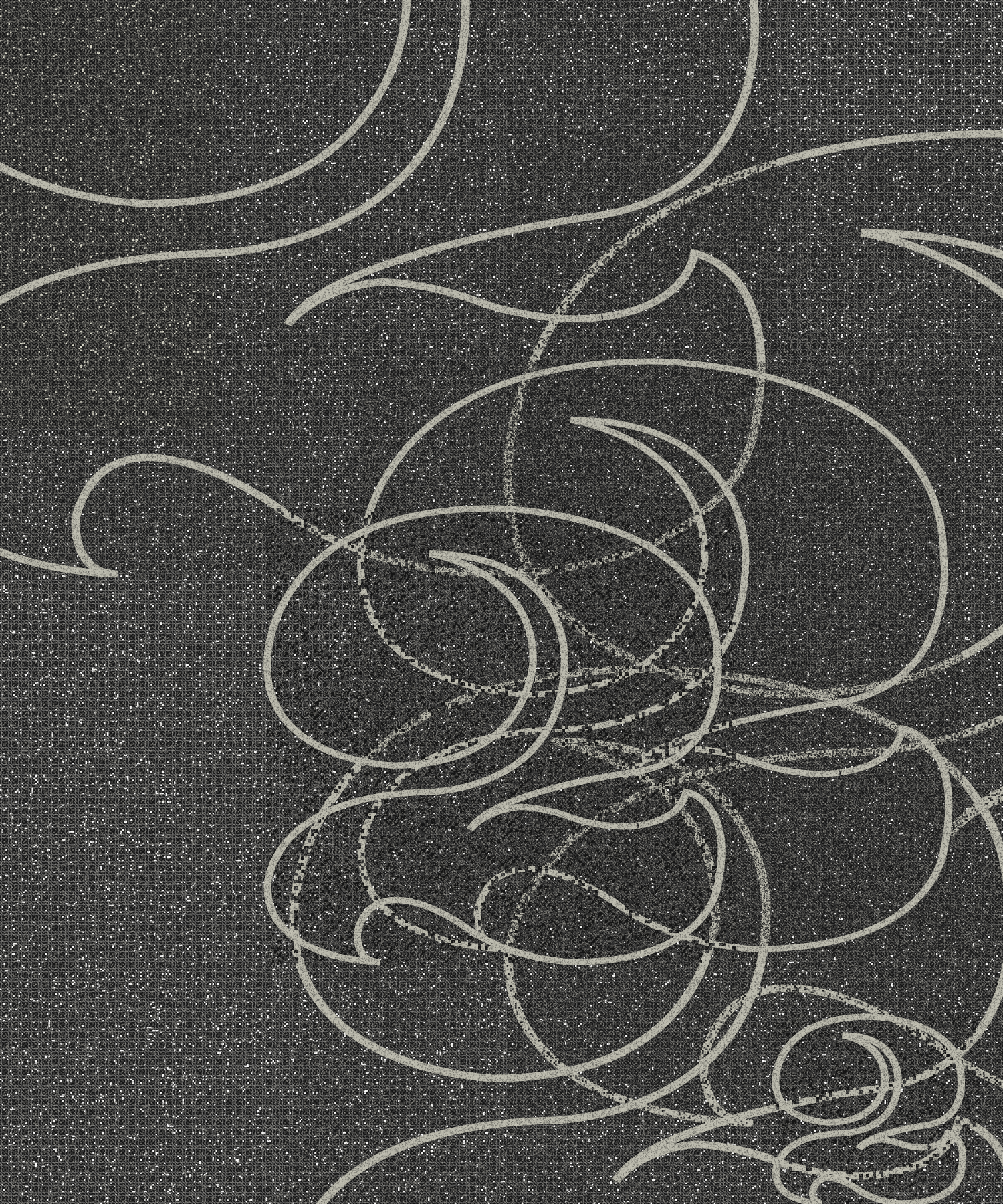Twos
When I was working in graphic design and immersed in typography, I spent a year and a half designing this “2”. A personal obsession, I drew and redrew it hundreds of times until I felt it reached the perfect form in balance, weight, and drama.
This generative series revisits my captivation with this character object, using the algorithm as a tool for continued obsession and exploration. I want people to experience this collection and never see a “2” in the same way again. I also want to remind viewers that exquisiteness can exist in any mundane thing.
Twos takes a “perfected” form and puts it to a further test. Different outputs situate the form in different contexts, look at it askew, or emphasize isolated parts of it for endless results.
Sketch for pixel icons, Susan Kare
Im männlichen Gehirn (In the Man’s Brain), woodcut print, Edvard Munch
Pixel art arose from the constraint of resolution available in early digital mediums. The texture visible in Twos uses the same constraint: a grid of squares with some squares missing.
pencil lines on paper
The tiny size of the squares visible in Twos creates an effect reminiscent of traditional mark making techniques, such as with a pen or stamp or crayon. Found in much of my work, these “visible pixels” represent the physical module upon which digital art is created - and by calling back to pixel art, act as a reminder that code is still a craft, and the generated image isn’t far from the artist’s hand.
Detail of pixelization texture
Detail of pixelization texture
ONE through ZERO,
Robert Indiana
Figure 6, Jasper Johns
I Saw the Figure 5 in Gold,
Charles Demuth
From Binary Odes,
Sasha Stiles
Plantoir, Claes Oldenburg
Repetition and modification is to the 2, what scale is to Claes Oldenburg’s giant spade. The act of removing these objects from every day use and deeming them special reframes the experience of recognizability and perhaps even art itself. Artists like Robert Indiana showed that a numeral could be elevated because we aren’t starting with zero; it’s not an abstract form for which we invent meaning as we lay eyes on it. Because of its inherent recognizability, we can appreciate its new and surprising form as art.
Beyond the beauty of the form, the number two is a special quantity because it implies possibilities beyond itself. A system containing zero or one elements is inert. Two creates an interaction, a dyad, and implies the possibility of more than two – an expanding system. In computer programming, this is expressed as the "zero, one, infinity" rule.
The two represents a potentially endless continuation.
Each feature in the collection represents either the analog or the digital journey of this character.
STRUCTURE
Ordered
Organic
Some compositions are gridded, others are organic and loose.
STYLE
Solid
Sketched
Some compositions render each symbol as linework, reminiscent of its earliest hand drawn form. Others render it as the solid numeral, completed after its long journey of iteration.
PERIMETER
Contained
Open
Some compositions are contained by a frame, others are open and unrestrained.
COLOR
Tinted
Neutral
Color enters a few outputs: the mark of new technological tools like the first colored ink in printing, or the move from black and white to digital screens. The brightest hues used depend on light emittance of the screen and wouldn’t translate exactly when printed in standard inks. But in a further application of constraint, most outputs are neutral in color, keeping the focus on the formal obsession with this small, beautiful character.

















































